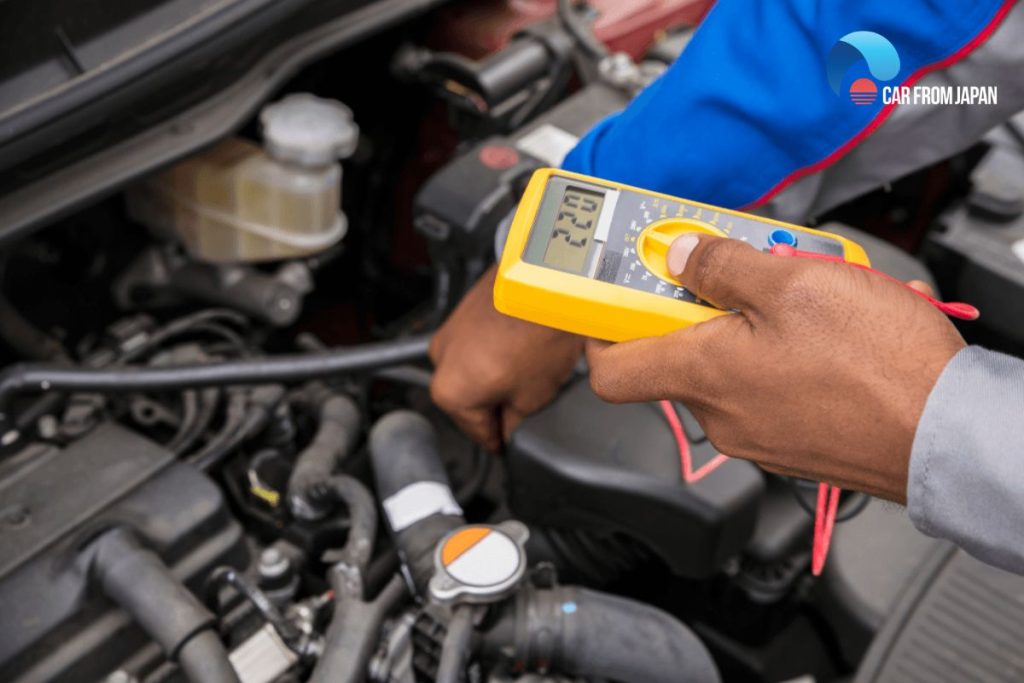An alternator plays a very important role in the electrical power system of a vehicle. A failing alternator may lead to many serious problems for your car in many ways.
So to help you avoid these situations, here is the list of several bad alternator symptoms. Stay tuned!
Contents
What Does An Alternator Do?
First of all, let’s learn some basic things about what an alternator does for your car.
Whenever you turn your engine, the alternator works to change the battery and supply power to the electrical systems of the car.
There is a wide range of electrical systems and devices in your car, beyond the MP3 player, stereo, AC, and lights. New cars have computers and sensors that all require electricity to operate.
From GPS systems to lights, the alternator supplies power for them all. If the alternator is faulty, a lot of electrical devices in your car will stop running.
When it happens, it is time for you to replace the alternator with a new one. The following symptoms will give you an idea of what’s gone wrong!

Bad Alternator Symptoms You Should Notice
Dim lights
Normally, a failing alternator results in flickering or dim lights. This is more obvious when you drive your car at night but also remarkable in the center dome light and dash lights.
If the lights illuminate as RPMs pick up, it definitely means your alternator is faulty or died.
Weird noises
The next on the list of bad alternator symptoms is weird noises. After operating for quite a long time, the serpentine belt could have stretched and may not have been spinning the alternator pulley efficiently, resulting in a lack of charge.
Typically this leads to a weird sound. On the other hand, the internal bearings can also be worn out, making a grinding or growling noise.
The engine stops working
If your engine suddenly stops working when you are on the way, it will surely be one of the bad alternator symptoms.
Fuel injection requires a proper amount of electricity to run, without it the engine will stop working quickly.
Service engine light
One of the other signs of a bad alternator is showing on the service engine light. This sign varies by the make and model, but basically, when the alternator starts to fail, it can light up a “ALT”, a battery icon indicator, or a “Check Engine” light.
Electrical issues
Of course, when the alternator is going to die, lots of electrical devices such as MP3, stereo, power windows, or seats may be slow to run.
If there is not enough power, the devices sometimes will not run effectively or will stop running suddenly, like the MP3 turning itself off.
Dead battery

Read More: Want to Start a Car with a Bad Starter? Check These 4 Tricks
Yes, a battery can fail due to some other reasons as well. But a dead alternator is usually the cause of a dead battery as it supplies no power to recharge it. Car batteries do not hold too much power for the long term.
They supply enough electrical oomph to start the starter motor and flow power to get the whole work spinning.
How To Diagnose A Failing Alternator?
Preparation:
- Code reader
- Safety Glasses
- Multimeter
When your car shows some of the symptoms above, it is time to diagnose the alternator. Here are some steps for you to look for.
Check Engine light
If the Check Engine light turns on, connect a code reader to the diagnostic port.
If it shows the code P0562, it means your alternator is going to die. (notice: that code is different depending on the make, model, year of the car). Get it checked out before it dies.
Check the hood
If you think your car has a failed alternator but there is no clear sign, open the hood anh check the condition of the belt. If the belt is slightly burned-looking and glazed, it means the belt is slipping.
When the belt is too loose, instead of traveling on the pulleys, the belt slips on them. The metal-on-rubber friction heats the belt, wearing it quickly.
In this case, you just need to replace the serpentine belt or adjust the tensioner to get the belt just right.
Use multimeter
If everything under the hood seems good, it is time to use your multimeter and do the checking process below:
- Park the car on level ground and turn the parking brake on
- Wear safety glasses
- Set the meter in somewhere between 15 and 20 DC and attach the leads to the battery. The number should be around 12,6 Volts.
- Then start the engine and inspect the voltage again in a very careful way.
- If the alternator is a good health and still changes the battery, the minimum number is about 14,2 Volts.
- If voltage is good, turn on the radio, heater, headlights interior lights, and any other electrical devices.
- The meter should show the number above 13 volts. If the number is below 13 volts, you will need to buy a new alternator for your vehicle.
Check the video from ChrisFix below to see the process of checking a faulty alternator in detail!
FAQs on Bad Alternator Symptoms
Can a bad alternator ruin a battery?
A bad alternator will lead to a dead (discharged) battery, causing a car not to start or run.
If the alternator is faulty and fails to provide a proper charge to the battery, the battery’s power reserve will gradually deplete.
Over time, the battery will become weak and eventually die.
A malfunctioning car alternator will affect the charging process and battery operation.
At the same time, the electrical equipment on the car also operates abnormally and cannot operate at maximum capacity.
How long will alternators last?
Automakers recommend replacing the alternator when it has reached 4 – 8 years of operation or traveled more than 150,000 km or 60,000 km in some special cases.
In some special cases, these times or kilometers may be earlier to avoid excessive depreciation on this part.
What causes a faulty alternator?
The common cause of alternator failure is bad diodes. The higher the charging load, the hotter they get.
Depending on each alternator failure situation, there will be different repair methods. In most cases, when a part is damaged, you just need to replace that part in the alternator.
However, if the damage is beyond repair, replace the car generator with a new one!
Conclusion
So now you know some common bad alternator symptoms and how to repair this problem.
For further maintenance tips, keep following Car From Japan to get updated every day!



